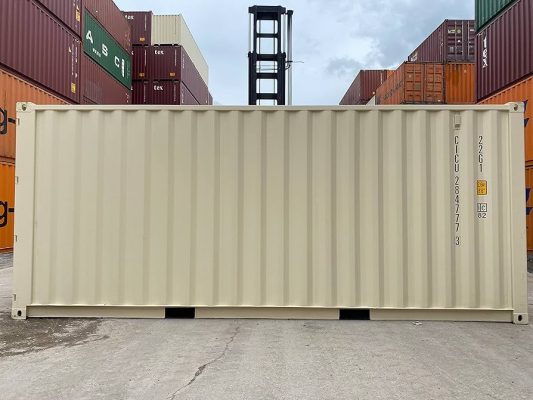The Future of Shipping Container Architecture: Trends and Innovations

Shipping container architecture has evolved from a niche trend into a mainstream phenomenon, offering innovative solutions for a variety of building needs. As the world seeks more sustainable and adaptable construction methods, shipping containers have emerged as a versatile alternative to traditional building materials. The future of shipping container architecture is bright, with several trends and innovations shaping its development. In this article, we will explore these trends and innovations that are driving the future of container architecture.
- Increased Focus on Sustainability
Sustainability remains a primary driver in the future of shipping container architecture. Containers, often made from steel, are inherently durable and can be recycled at the end of their life cycle. However, architects and builders are pushing the envelope by incorporating additional sustainable practices. For instance, many new container buildings are designed to include green roofs and walls, which help to reduce the urban heat island effect and enhance energy efficiency.
Furthermore, the integration of renewable energy sources, such as solar panels, is becoming more common. These additions not only reduce the environmental impact but also make container structures more self-sufficient. The use of recycled and eco-friendly materials for insulation and finishes is also gaining traction, contributing to a reduced carbon footprint.
- Modular and Expandable Designs
One of the most exciting aspects of shipping container architecture is its modular nature. This flexibility allows for the creation of structures that can be easily expanded or reconfigured to meet changing needs. Modular container buildings are particularly valuable in scenarios where rapid deployment is crucial, such as emergency housing or temporary offices.
The trend towards modular design is also evident in permanent structures. Many architects are now designing container homes and offices that can be expanded by adding more containers or integrating them with other building components. This approach not only offers customization but also allows for scalable solutions that can adapt to different requirements over time.
- Innovative Interior Design
Gone are the days when container interiors were merely functional. Modern shipping container architecture focuses on creating comfortable, aesthetically pleasing living and working spaces. Designers are using creative approaches to maximize the use of space, incorporating smart storage solutions, and enhancing natural light through strategic window placement.
The use of high-quality finishes, such as bamboo flooring, reclaimed wood, and sleek cabinetry, helps to elevate the container’s interior to match traditional homes or offices. Additionally, advanced insulation materials and climate control systems ensure that container spaces are comfortable year-round, addressing concerns about temperature fluctuations and noise.
- Integration with Advanced Technology
Technology is playing a significant role in the evolution of shipping container architecture. Building automation systems, including smart thermostats, lighting controls, and security systems, are being integrated into container structures to enhance convenience and safety. These technologies contribute to a more efficient and user-friendly living or working environment.
Moreover, the incorporation of Internet of Things (IoT) devices allows for remote monitoring and management of container buildings. This technological integration is especially beneficial in remote or off-grid locations, where connectivity and control are crucial.
- Resilient and Disaster-Resistant Structures
The ability of shipping containers to withstand harsh conditions is another factor driving their popularity. Their robust steel construction makes them well-suited for use in areas prone to natural disasters, such as hurricanes, earthquakes, and floods. Architects and engineers are exploring ways to enhance the resilience of container buildings further, including reinforcing their structural integrity and incorporating advanced foundation systems.
Container architecture is also being adapted for use in disaster relief scenarios. Rapidly deployable and easily assembled, container units can provide temporary shelter and essential services in the aftermath of a disaster, demonstrating their value in emergency situations.
- Global Adaptation and Cultural Influences
Shipping container architecture is not confined to any single region or style. Its adaptability allows it to be embraced by diverse cultures around the world. Architects are incorporating local materials, design elements, and construction techniques to create container buildings that reflect regional aesthetics and functional requirements.
In some countries, container architecture is being used to address housing shortages and urbanization challenges. For example, in rapidly growing cities, containers are being converted into affordable housing units or community centers. The global adaptation of container architecture highlights its versatility and potential to address various needs and challenges.
Conclusion
The future of shipping container architecture is characterized by sustainability, modularity, innovation, and adaptability. As technology advances and design practices evolve, container buildings are becoming increasingly sophisticated and versatile. From eco-friendly solutions to resilient structures and culturally adaptive designs, the trends and innovations in container architecture are paving the way for a more sustainable and flexible built environment. As this trend continues to grow, shipping container architecture will undoubtedly play a significant role in shaping the future of construction and urban development.

